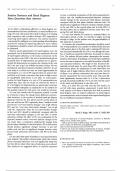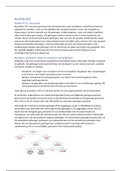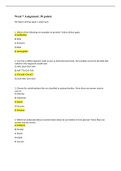Exam (elaborations)
Positive Deviance and Hand Hygiene: More Questions than Answers
Course
Positive Deviance and Hand Hygiene
Institution
Positive Deviance And Hand Hygiene
To the Editor—Optimizing adherence to hand hygiene rec
ommendations has been problematic in many healthcare set
tings. We read with interest the article by Marra et al1 relating
their experience with a positive deviance (PD) approach to
improving hand hygiene adherence. The authors should b...
[Show more]
Uploaded on
August 4, 2024
Number of pages
2
Written in
2024/2025
Type
Exam (elaborations)
Contains
Questions & answers
Institution
Positive Deviance and Hand Hygiene
Course
Positive Deviance and Hand Hygiene
$10.99
100% satisfaction guarantee
Immediately available after payment
Both online and in PDF
No strings attached
978 I N F E C T I O N CONTROL AND H O S P I T A L E P I D E M I O L O G Y S E P T E M B E R 2 0 1 0 , VOL. 3 1 , N O . 9








